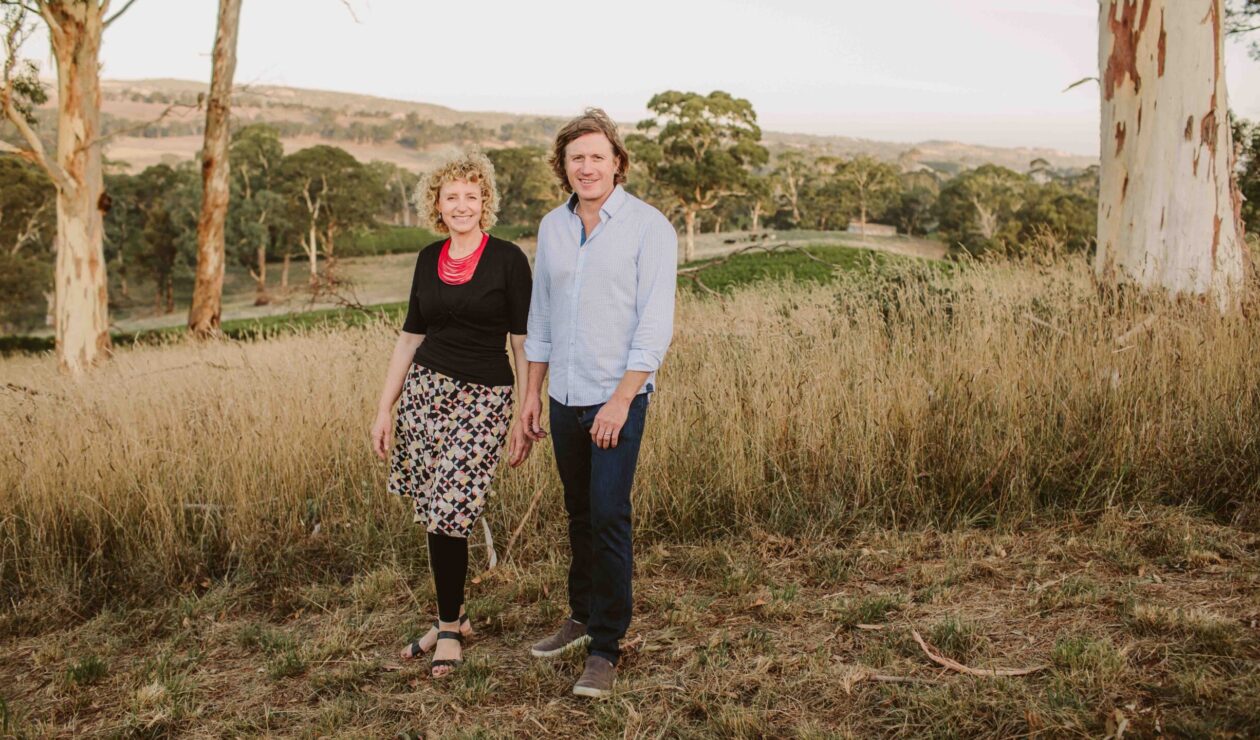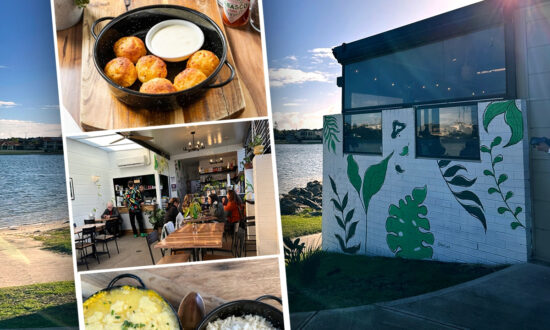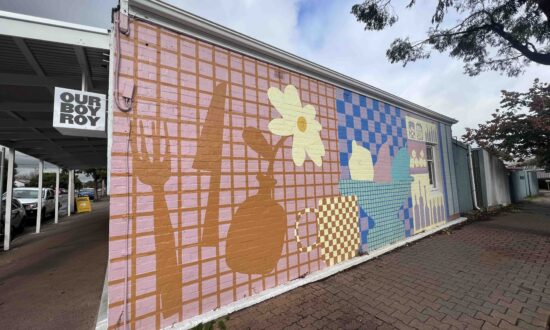Let’s begin with a few words from a renowned wine traveller: “I like to think of (a famous wine region – let’s withhold its name for the moment) as a state of mind rather than a place dependent on contours, kilometres and references on the map.
“In my mind this is a magical haven of hills, of a bucolic way of life far removed from the drab conformity of our city existences… doesn’t need a map of time and place, just a vaguely remembered sketch of the head and heart.”
Where might renowned UK wine writer and broadcaster Oz Clarke be? The words seem to suit our own Adelaide Hills yet he is in fact waxing lyrically in an early edition of his epic international Wine Atlas about the French region of Beaujolais.
From Clarke’s description, both places look to have striking geographical similarities. And, in the past few years, another common factor has risen to the surface – the grape variety Gamay.
Comparing a wine style in Australia to how it performs in its country or state of origin is a complicated issue. Benchmarks, of course, are beneficial for winemakers, but no wine from a particular place will be an exact copy of another of the same variety.
And that’s fine when it comes to varieties that have firmly established their identities in those places.
With Gamay, however, being such a newcomer to South Australia, it’s pertinent to check more closely its French reference points to gain a better feel for where it might work best and how it might be crafted to gain the most respect.
Gamay’s home in France, Beaujolais, sits immediately south of Burgundy, famed for its Pinot Noir and Chardonnay-based wines, and north of the Cotes du Rhone, where Shiraz is king of the reds. The region’s popularity boomed internationally several decades ago with a genius marketing program that sold the first wine of France’s harvest to the world, Beaujolais Nouveau, released internationally on the third Thursday of November. It was a slurpy, light, fruity red, often packaged with bright floral labels, a hyper-popular drink that in the long term sullied the region’s reputation to be able to do anything genuinely serious with the Gamay variety.
Eventually, more complex variations on the Gamay theme came to light via France’s appellation system and the designation of Village and Cru districts recognised for making red wines that drank much more like red Burgundy styles of Pinot Noir, especially if allowed to mature for a few years. And, like Burgundy, each of those Cru is defined by different climate/soil/aspect/and altitude elements – terroir as we know it.
It’s not very often that a new variety grabs my attention in the way that Gamay has
How might this translate, then, in a different hemisphere, all the way around the globe to the Adelaide Hills? For Adam Wadewitz, head winemaker at Shaw+Smith and also with business partner Nicole Roberts in their own wine brand, Elderslie, there’s a pretty neat comparison that sets the scene.
“In the Hills, you’ve got really high, cool bits that work for Pinot and then there’s a fair bit of the Hills that work very well for Shiraz, and there’s this bit in the middle that’s a bit like Beaujolais,” Wadewitz says.
“It’s sort halfway between the Rhone and Burgundy, if you put it in a French context.”
Wadewitz knows well both the Pinot and Shiraz goalposts via his work with Shaw+Smith, focusing on high-land Lenswood for Pinot and lower country at Balhannah for Shiraz.
When he first got to pondering the grape variety that in France sat between those two – Gamay in Beaujolais – and where it might work best in the Hills, there was barely any here to study. But in the space of the past seven years, a lot has happened.
Taras Ochota was one of the early birds, tapping into a vineyard in Woodside run by Sam Virgara. Darren Golding planted a couple of blocks on Western Branch Road near Lobethal. Then another vineyard manager, Mark Vella, entered the Gamay discussions, hugely keen on its potential, first planting and managing a vineyard near Hahndorf and now expanding to several other blocks. Vella is now regarded as the Gamay guru in the region, having sourced new clones and figured out the best ground and viticultural techniques for the grape. He also has his own wine brand with a very smart Gamay included.
“It’s been unreal the way it has taken off,” Vella says. “We’ve gone from the first planting eight years ago to after this vintage where I reckon we’ll have 19 labels out of the Hills with Gamay.
“It’s going to be an exciting new variety for the region.”
Vella believes the central districts of the greater Hills region, even though that’s a fairly broad sweep, are where it will perform best. Gamay loves free-draining soils on quartz and ironstone, he says.
Wadewitz agrees: “You don’t want to be in the warm spots, and you don’t want to be on the super cool spots either because it’s going to look green and mean, and its acidity will be too high.
“It’s got to be planted where it’s suited, and I think, just from what I’ve seen, it has a relationship with granite in Beaujolais. It makes lovely wines out of stone-rich soils.”
Now that there are key areas of the region that are both planted to Gamay or destined to be, the focus can turn to the style of wine that will best shine there. One thing’s certain – no one wants to go down the Beaujolais Nouveau path.
From Adam Wadewitz’s point of view, the most apt style will tend towards the Pinot Noir end of the spectrum or, in more specific Gamay comparisons, the more complex Cru Beaujolais wines.
“What it brings pretty readily is great colour and depth of flavour, with an effortless kind of intensity,” he says.
“We’re trying to make wines that have beauty, a lovely generosity but they also have that structure and the colour and intensity that Gamay brings effortlessly.”
Another huge fan of the grape is Turon White, head winemaker at The Lane and also with his own label Turon Wines. He steers separate Gamays under both labels, the former from a newly created block at the Lane’s estate vineyard at Hahndorf, and his own sourced from the Hill Smith Woodside vineyard.
“I think we’d be selling ourselves short by making basic Beaujolais Nouveau wines,” White says of the Hills in general.
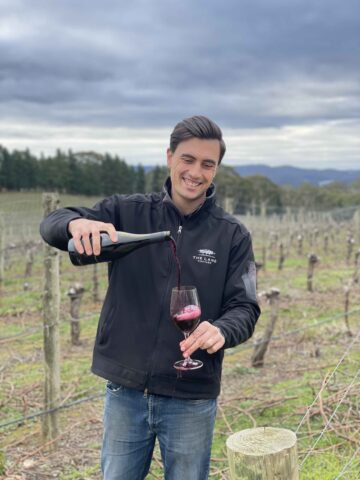
Turon White is a fan of the Gamay variety in the Hills.
“We seem to have a really good set of factors geared towards Gamay: cool air temperatures which lock in the variety’s acidity and vibrancy, but we’re also able to ripen it to the point where it has colour, structure, tannin development and savoury aspects as well as bright fruit notes.
“That’s what makes it really exciting – it can have both those bright, pretty characters and structure and seriousness and depth which is a unique thing that not every variety can do.
“It’s not very often that a new variety grabs my attention in the way that Gamay has,” he emphasises.
One of the Gamay iterations that has brought focus to the variety in the Hills is the Golding Ombre, which has scored several gold medals in major competition circles, including a trophy at the 2022 Australian-wide Cool Climate Wine Show.
Its early plantings began shakily with the only available material being less than robust. By the time they were starting to deliver decent enough yields to showcase its development and potential, the devastating bushfire in December 2019 “fried” one section of Gamay and took out others.
Darren and Lucy Golding kept faith, retrained one block of vines and replanted other sections with better clones. In short, Darren says, they persevered. It was the right variety to explore at the right time. It suits the small bar culture that has sprung up in capital cities, and the style of lighter to medium-bodied red wines that are increasingly popular.
“Straight up it has a very attractive colour, and fragrance, and then it’s bright, fresh and lively, a jubiness without being sweet, as well as an earthy character and some chalky tannins, which give a salivating finish,” Darren says.
“The key is it has all those things, and if they are all brought together, even someone who doesn’t know a lot about the variety will find it a very appealing drink.
“It seems to be the style of red wine that is now gaining a lot of traction with a lot of consumers.”
TASTING NOTES
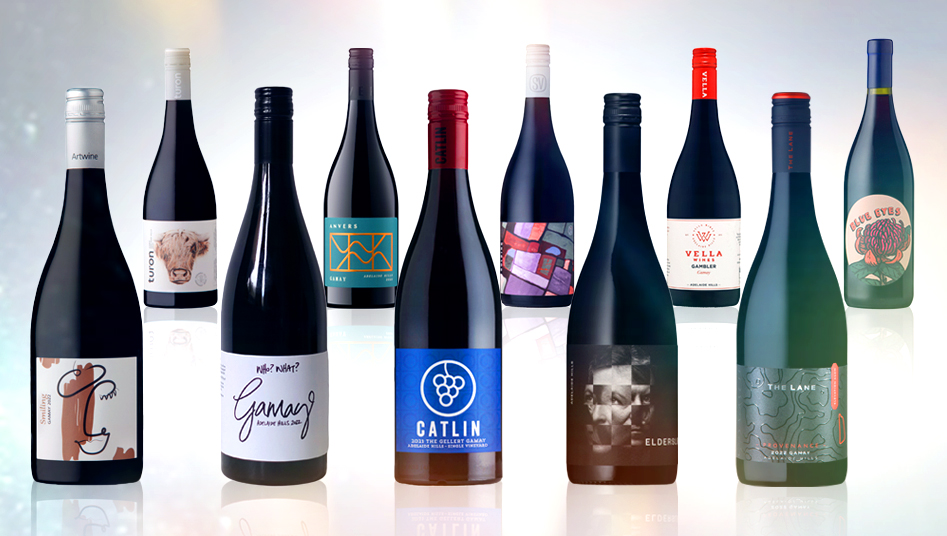
Artwine Smiling Gamay 2022
Adelaide Hills / 12.5% / $45
Estate grown on rising ground southeast of Woodside township, leaning to a lighter expression of the variety though definitely not all the way to Beaujolais Nouveau style. Colour hits the shiny garnet spot, the nose floral with a stalkiness and red currant bush character all vying for a stake, the fruit in a kitchen herb-tinted red fruit and raspberry leaf tea spectrum. Pretty as all get out yet with a subtle peppery edge to its juicy, softly, softly denouement.
La Prova Who? What? Gamay 2022
Adelaide Hills / 13% / $38
While La Prova winemaker Sam Scott focuses almost entirely on Italian Varietals, he came upon this Gamay fruit out of a lower Woodside vineyard – one of the Hills leading source blocks – and couldn’t resist it. Hence the name, one can surmise. For all that, it fits perfectly into his winemaking vibe, ambition meeting success here, the nose striking a typical aromatic, crushed cherry note with cool, garden herb senses – sage/thyme/oregano – before juice and jube follow in a sour cherry line. The palate has a subtle chewy feel and salivating finish. More please.
Catlin The Gellert Gamay 2021
Adelaide Hills / 13.5% / $32
From a widely sourced vineyard near Hahndorf, there’s an eye-catching glossy garnet to begin, with a subtle uptick in ripeness that drives the nose with cherry and spice fruit intensity. The magic here is that the palate ripples with zing and freshness, a lively, crunchy mouth-watering feel with heaps of flavour swirling as you sip, though never over-intense. Just right, always athletic with boundless energy.
Elderslie Hills Blend #2 Gamay 2021
Adelaide Hills / 13.5% / $42
From the same Hahndorf vineyard that several other producers tap into, here we have an opportunity to see nuanced winemaking style come to the fore. This wine is a step darker than others tasted, and a touch more concentrated – a faint nudge of French oak in the backing chorus while classic sour cherry and black tea notes head up the front of house. Complex harmonies in the palate complete the overall expression of the wine, which remains continually enticing, spicy with peppery notes and the faintest of amaro bitters in the finish. Heading to the more serious end of the Hills Gamay spectrum – and all power to it.
The Lane Provenance Gamay 2022
Adelaide Hills / 13% / $55
From The Lane’s estate vineyard east of Hahndorf, this variation is clearly in the sour-cherry mode in its fruit definition, then tending savoury, almost meaty in the palate, a little muscly yet still light to medium weight in framework. Flavours stretch out a little as you taste, a subtle sage/mint/licorice feel adding interest to the overall expression and suggesting a specific vineyard and/or clonal quality may be showing itself. Will be fascinating to monitor in future vintages – as for now, very smart styling in such an early outing.
Turon Gamay 2022
Adelaide Hills / 13% / $38
From the Hill Smith vineyard in lower Woodside, source-home to several Gamay iterations covered here. Mid to dark garnet in the looking glass, earthy, a faint gaminess, then a swish of lively cherry fruit squash in the sipping, gently chewy in mid palate texturals, leaning to lip-smacking and spicy/ peppery, the crunchy fruit lines remaining lively throughout with a glimmer of dark mint bitterness in the finish. Lots going on and quite a gastronomic style.
Anvers Gamay 2022
Adelaide Hills / 13.5% / $35
A first crop off Wayne and Myriam Keoghan’s Razorback Road vineyard near Mt Bold, just inside the western boundary of the official Hills region. Lovely crimson rose and spearmint florals to start with a crumbly soil/dust note as well – pretty and earthy at the same time which is one of the variety’s natural gifts. Stylish and sophisticated, upright with typical acidity and chalk-dust tannin structural foundations. Completely in the zone with light pepperiness adding some spice to finish. Seductive.
Golding Ombre 2022
Adelaide Hills / 13.5% / $32
From the Golding estate between Woodside and Lobethal, a mix of old and newer plantings, clonally diverse as well. This wine has been a showpiece for the variety in the region, with multiple capital city show gold medals to its name and a trophy at last year’s Cool Climate Wine Show. It ticks all the boxes with its glossy crimsons, a vibrant cherry and plum nose, follow-on flavours with a subtle note of pepper and baking spice, and classic soft finishing touches. What’s not to love?
Vella Gambler Gamay 2020
Adelaide Hills / 13% / $42
From the same Hahndorf district vineyard Mark Vella established and manages for clients, the source of several wines in this cohort, here is a typical expression of the variety: sour cherry and bushland florals, darker violets as well, attractively fragrant from the outset. All this tumbles into a juicy, easygoing, uncomplicated banger of a medium-weight style, vibrant with a light dusting of chalkiness in the palate, supporting its lingering cherry flavours. The 2021 vintage, due to be released in the coming months, leans into a more serious style and climbs the ladder to higher acclaim for the grape.

Get InReview in your inbox – free each Saturday. Local arts and culture – covered.
Thanks for signing up to the InReview newsletter.
Worlds Apart Blue Eyes Gamay 2022
Adelaide Hills / 11.9% / $40
From Sam Virgara’s Eureka vineyard in Woodside, the same source that has fed Taras and Amber Ochota’s Gamay wines for several years. This iteration is crafted by their long-time winemaking colleague Louis Schofield, who has let the fruit do virtually all the work here. Wild fermentation, whole bunch and carbonic maceration techniques bring a little forest and leaf to the aromatic party, crushed red berry pulling plenty of fruit intensity. Texturally interesting as well – some skin chewiness in the tannin feels, yet silky giving way to a finishing zing. Crying out for a rustic wintry braise dish.
Support local arts journalism
Your support will help us continue the important work of InReview in publishing free professional journalism that celebrates, interrogates and amplifies arts and culture in South Australia.
Donate Here
